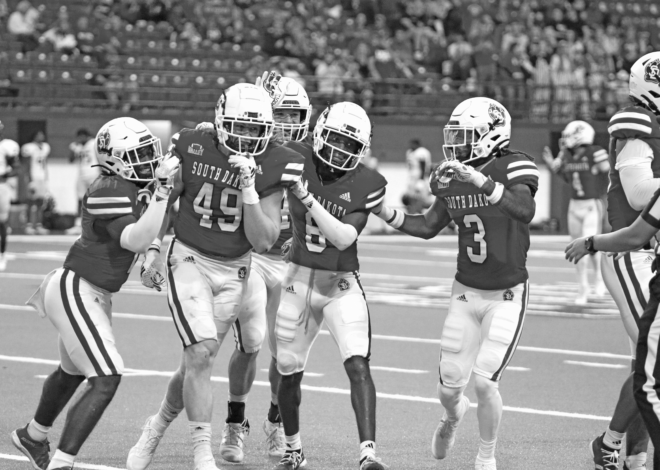
Pay gap between male and female coaches ‘a problem’
Data gathered from the University of South Dakota’s athletic financial report for the 2014-2015 fiscal year shows a noticeable discrepancy in payment between the men’s and women’s head coaches, making a gap of more than $41,000 in yearly pay.
USD Athletic Director David Herbster said the university does a good job by compensating their head coaches fairly.
“Amy, our women’s coach, is one of the top paid Summit League coaches for women, and Craig, our men’s coach, is in the middle of all the coaches in the Summit League,” he said.
Comparing this to the national average in 2014, male head coaches earn $1,783,100, and female head coaches earn up to $850,400, making a difference of $932,700.
The difference in salary does not just involve head coaches, but assistants as well. At USD, men’s assistant coaches make an average salary of $72,000, and women earn up to an average salary of $42,891.67.
Former USD women’s basketball head coach Gary Larson said the discrepancy happens for two reasons.
“The fact that it’s acceptable for a male to be a women’s basketball coach takes away these positions for women,” he said. “The other reason is that the influence of women becoming head coaches is a strong, growing influence today, but was not as strong as when I was a coach.”
Lisa Maatz, the vice president of Government Relations of American Association of University Women (AAUW), said there is still a problem with pay discrepancy, but there are also solutions.
“Clearly, we think there is a problem with the pay gap,” Maatz said. “We believe the pay gap that is there today is based on discrimination and stereotypes of women.”
Maatz said in 2013 when the AAUW used the brackets of March Madness teams and advanced them by how much of a pay gap the men and women’s coaches have at that university, the results showed that power five conference pay gaps are not as large as other schools.
Only Baylor made the elite eight in this specialized bracket, Maatz said. She said it also showed that some schools have huge pay gaps between their coaches.
Dayton, the winner of their bracket, had a 96 percent difference in pay between the average salary of men and women head coaches.
For this problem to be fixed, Maatz said there are a few things that would help.
“Universities need to hold themselves accountable for any sport, see how they are paying their coaches and be able to justify it correctly without using excuses such as ‘women’s sports make less’ and that ‘all sports are not supported equally at their university,’” she said.

